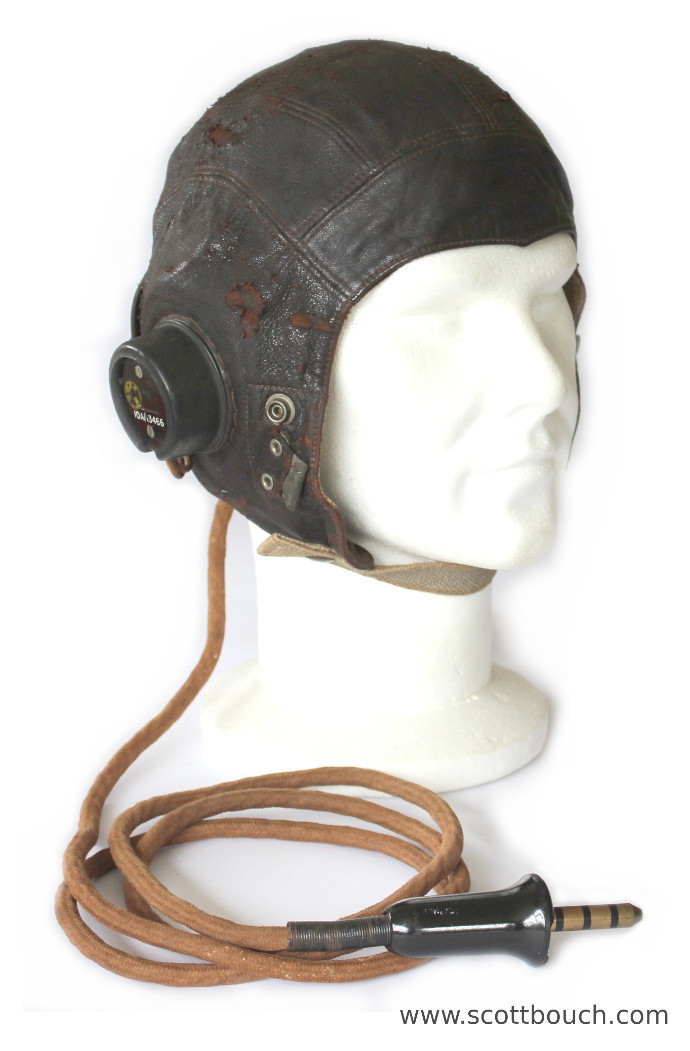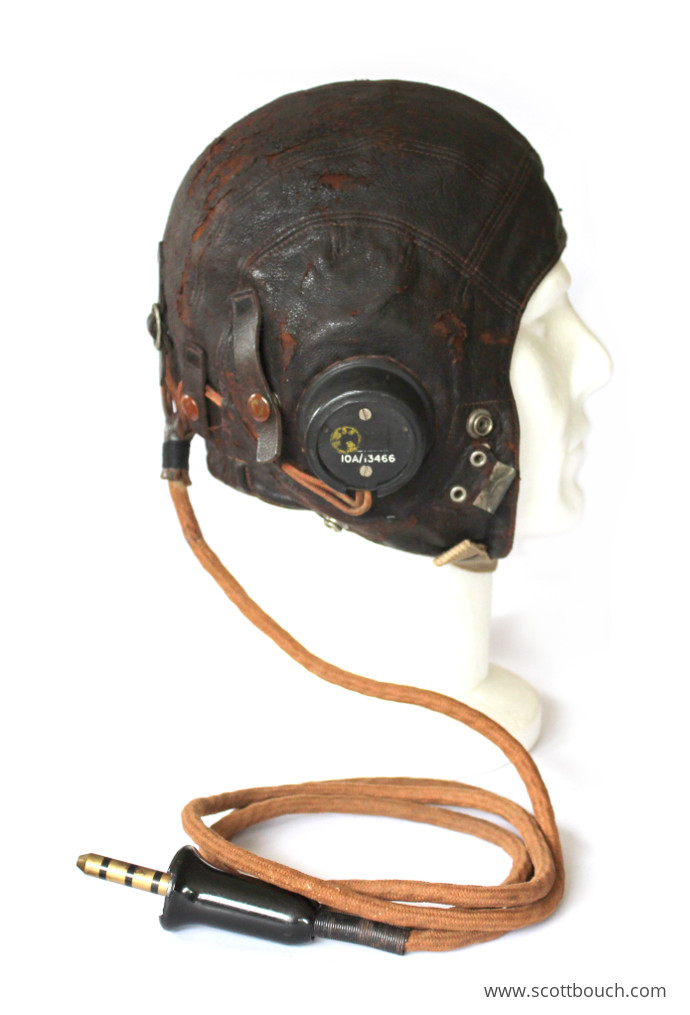British C-Type Wired Aircrew Flying Helmet
Stores Ref. No's: 22C/887 Size 1 | 22C/878 Size 2 | 22C/879 Size 3 | 22C/880 Size 4
The C-Type Wired helmet is a leather helmet with chamois inner layer. It has an installed electrical headset, and has fittings for an oxygen mask and goggles. The Wired helmet also introduced an elastic chin strap with pop stud, over the previous C-Type's leather chin strap and Bennets Buckle.
The C-Type Wired helmet's headset uses rubber cups for directly mounting the earphones, the same as the earlier "C-Type" helmet.
The main distinguishing factor between the C-type Wired helemt and is that the Wired version includes passages in between the leather and chamois liner for cables to pass through.
This helmet was produced in two variations, referred to as "early" and "late":
- "Early" C-type Wired is fully internally wired.
- "Late" C-Type Wired wiring harness is partially exposed at the rear.
Having installed the wiring harness to a late pattern Wired C-Type with great difficulty, I can imagine how hard it must be to install it to an early pattern. I can only assume this is the reason for the change in design.
I am yet to find evidence for accurate dates, but I am told that the "early" C-Type Wired helmet was only available during the years of the second world war, and the "late" C-Type Wired helmet was introduced toward the end of WW2. Additional to these rumours, I have found evidence (below) that the C-Type Wired contiued in service into the 1950's.
Both "early" and "late" C-Type Wired helmets are fitted with a "telephone connector Type 2091" wiring harness. The harness is removable for replacement, but is listed as part of the helmet assembly under the helmet stores reference numbers.
Added layer of naming complexity
The terms "First Pattern" and "Second Pattern", and the subset of "Early" and "Late" within the Second pattern (as detailed in this page) originate from books written on the subject of WW2 flying clothing. The official terminoloy I have found referenced in Air Ministry AP's for what is commonly known as the "Second Pattern" is actually "C-Type Wired". I have not found yet any official terminology to reference "Eary" and "Late", so have stayed with the 'book' convention for these subsets.
I also can't find different Stores Reference numbers for the "Early" (fully internally wired) and "Late" (partially internally wired) C-Types, the only difference betnween the Stores Ref. numbers reflects different sizes.
See further article explaining the confusing names of C-Type helmets.
C*-Type
A further development of the late pettern C-Type Wired is the C*-Type (and its tropicalised version) for aircraft fitted with ejection seats.
RAF/RN AP Resources
AP4380, Section 5, Item 18 (1952)
The image below illustrates the C-Type Wired helmet. Note the headset wiring harness has been hastily placed in situ for the photograph as the headphone wires are left loose. It is unclear from the image if this is an "early" or "late" C-Type Wired, but since it's dated 1952, one would imagine it's most likely a "late" C-Type Wired.
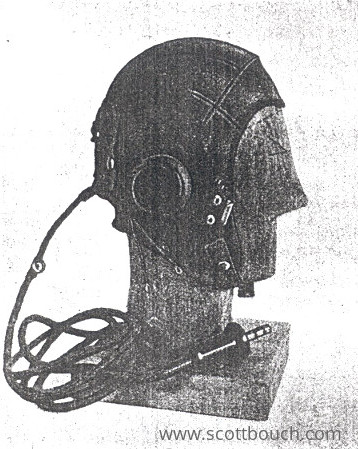
Exhibits
C-Type Wired Helmet - Early Pattern
The early pattern Wired C-Type helmet accepts the harness at a strain relief and slot at the rear centre. The wires then pass fully inside the helmet (between outer leather ans chamois liner, until they exit for the earpieces. The microphone wire stays within the helmet, up to the connector on the left.
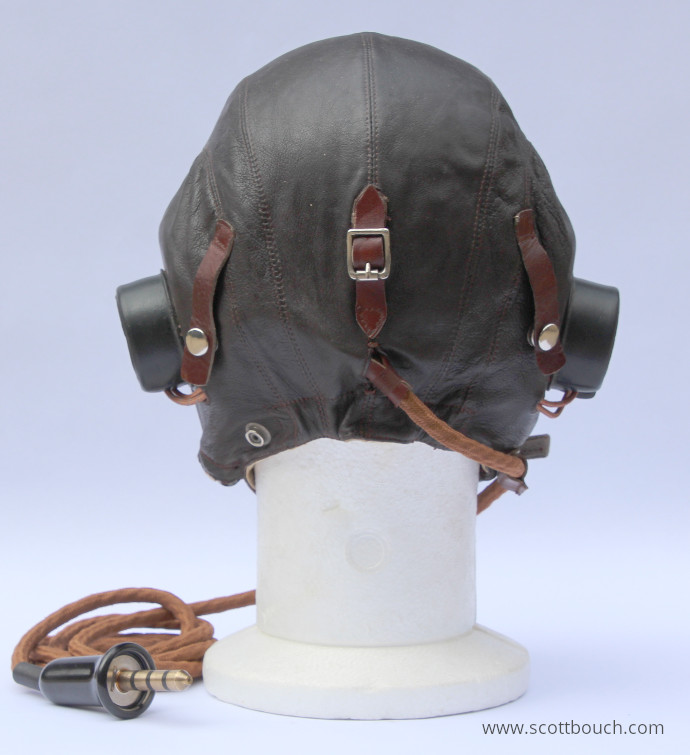
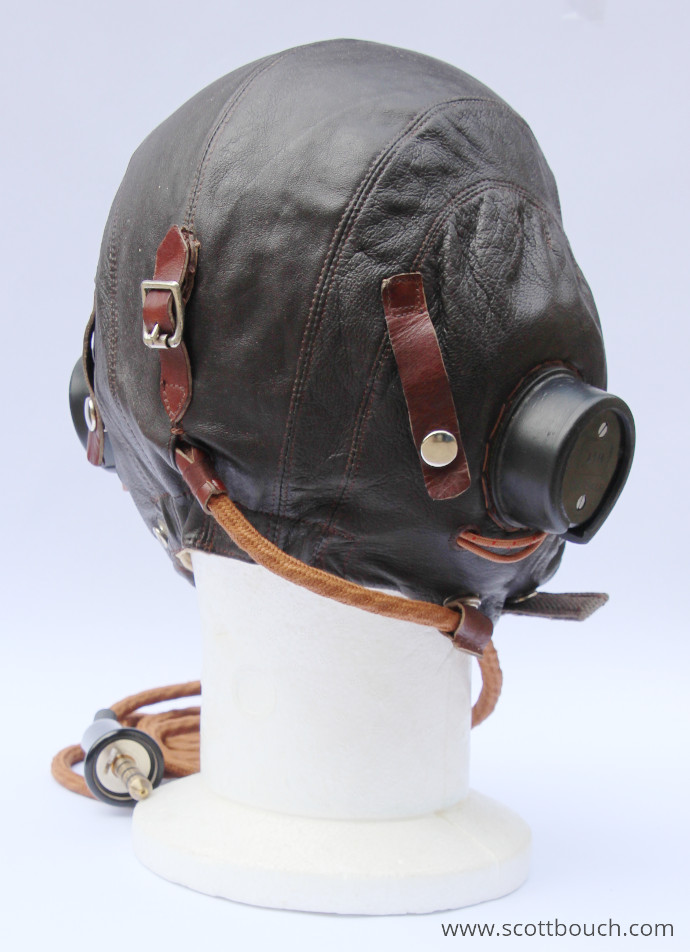
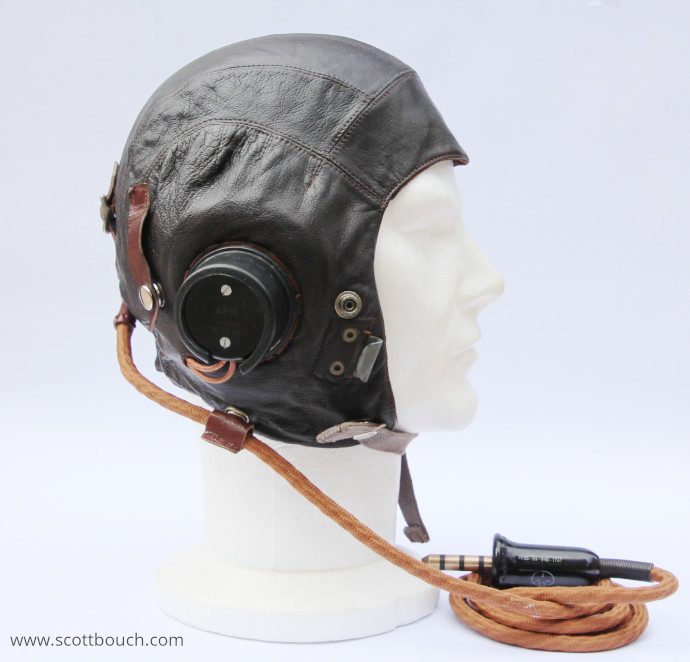
C-Type Wired Helmet - Late Pattern
The late pattern Wired C-Type helmets accept the harness at a strain relief at the rear centre. The wires then pass under retaining tabs, before going inside the helmet leather for a short hop to the earpieces and microphone connector.

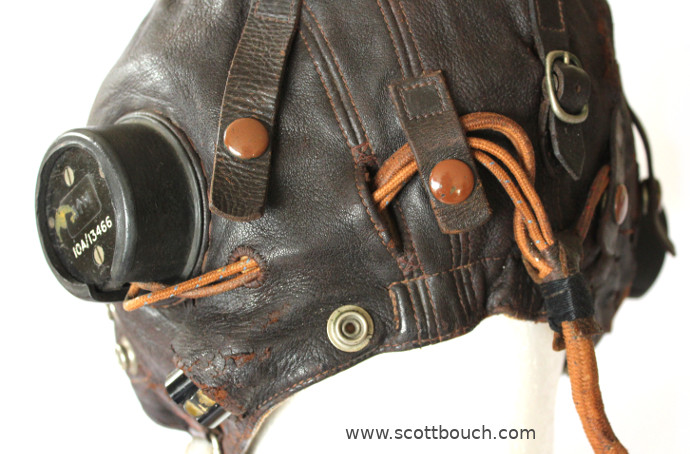
I bought this helmet in a very poor condition many years ago from an antiques fair; the leather was flaking off, and was mostly orange in colour. I have treated the leather many times over the years to recover it as much as possible, but it remains quite weak and thin.
